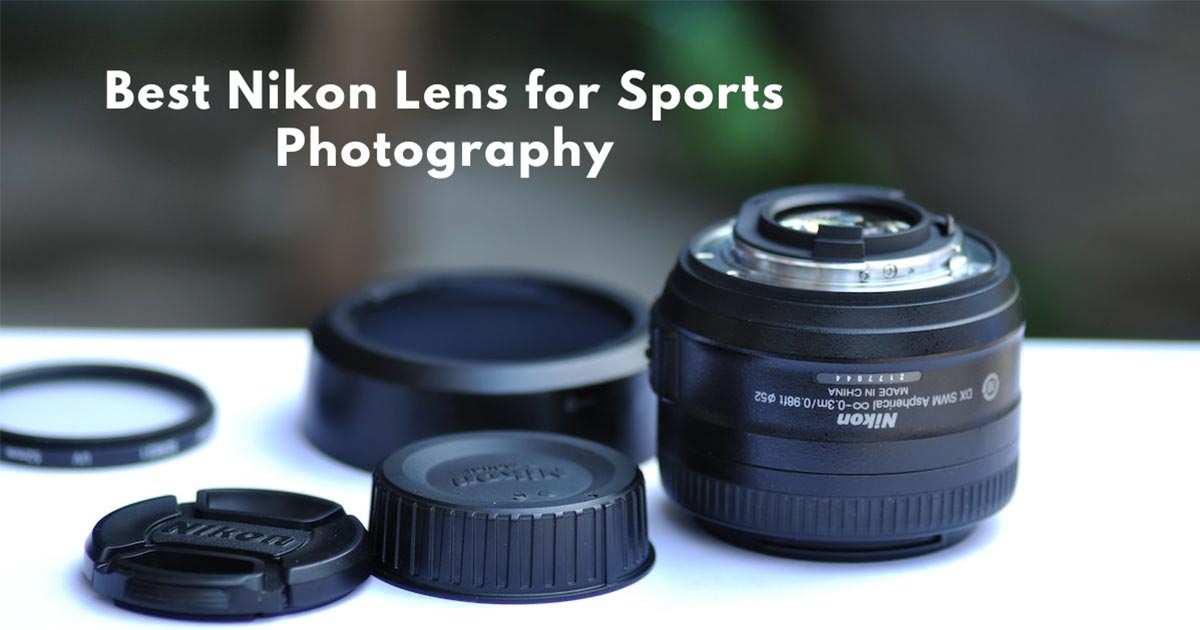The last sport you enjoyed. Remember that blood rushing in veins, heart beating feeling? Nothing beats that excitement, right?
Keeping aside the commercial purposes, capturing crazy moments in sports works as great fanservice.
Statistics say that around 200 globally recognized sports have billions of fans and supporters.
So, images are a great source of after-match entertainment for the sports industry and fans.
On that note, here’s our article on the best Nikon lens for sports photography, dedicated to those taking sports shots or not sure which lens to buy.
What you’ll learn in this article
- 1 Why Does Choosing the Best Lens for Sports Photography Matter?
- 2 What Type of Lens Should I Use for Sports Photography?
- 3 The 10 Best Nikon Lens for Sports Photography
- 3.1 1. Nikon 70-300mm f/4.5-5.6G ED IF AF-S VR
- 3.2 2. Nikon AF-S NIKKOR 70-200mm f/2.8E FL ED VR Lens
- 3.3 3. Nikon Z 100-400mm f/4.5-5.6 VR S
- 3.4 4. Nikon AF-S 80-400mm f/4.5-5.6G ED VR
- 3.5 5. Nikon AF-S 200-500mm f/5.6E ED VR
- 3.6 6. Nikon AF S NIKKOR 85mm f/1.8G
- 3.7 7. Nikon AF-S 300mm f/2.8G ED VR II
- 3.8 8. Nikon AF-S NIKKOR 24-70mm f/2.8E ED VR Lens
- 3.9 9. Nikon AF-S DX NIKKOR 35mm f/1.8G Lens
- 3.10 10. Nikon AF FX NIKKOR 200mm f/2G ED
- 4 Factors to Consider While Choosing The Best Lens for Sports Photography
- 5 FAQs
- 6 Final Verdict
Why Does Choosing the Best Lens for Sports Photography Matter?
The subject of sports photography is moving or motioning. To take shots of fast-moving subjects, like in a sport, you need one hell of a lens. WHY?
Here are the reasons to choose the best lens for sports photography.
Capture Action
Action or motion isn’t easily capturable. Quick movements, intense scenery from afar, excited cheering supporters- all these make the events so active and lively; you wouldn’t want to miss them. A good lens can cope with your requirements.
Image Quality
If your lens isn’t good enough, you might end up getting distorted image quality and motion blur in your images, resulting in failing your purposes. A good lens has many in-built features that eliminate any risk of damaging image quality.
Close shots
Action shots are better off when watching from proximity. Let’s say a cricket match; you want to see the wicket or a catch. The quality lens brings the subject close to you without causing any issues.
Understanding Variation
Sport photography lenses aren’t something of another kind; the functionality is different. With any lens, you can’t capture a motion scene. You need to understand the variation and adjust technically. That’s why you need a good lens.
What Type of Lens Should I Use for Sports Photography?
Telephoto, zoom, prime, and wide-angle are the 4 types of lenses for sports photography that most experts use. Here are the reasons why these lenses are the most convenient for taking shots of sports events.
1. Telephoto Lens
Your subject can be distant or beyond reach; it won’t matter as long as you own a telephoto lens. A telephoto lens is a long, focused length, meaning it has superb magnification capability. A telephoto lens will get you closer to the subject, making it appear lifelike in size.
To shoot sports events, a focal length of above 600mm is proven to bring excellent results. If you make your shutter speed slower, you will be able to capture all the actionable movements clearly and precisely.
2. Zoom Lens
One area where photographers frequently find fast-moving subjects is in the world of sports. Therefore, having a zoom lens will help you get close or move further, keeping pace with your subject, experimenting, and adjusting the focal length options to get the best output.
Sports photographers typically shoot sports with a super-telephoto zoom lens (400mm–1200mm focal length range). Such a lens is capable of taking photos with fine details. For taking sports photos, a telephoto zoom lens of 70-200mm is typically advised.
3. Prime Lens
Due to their fixed focal length, prime lenses are known for producing photos of the highest quality. A high aperture is another feature that the prime lens gives to capture motion shots in sports.
You can choose to use a prime telephoto lens as well. Prime lenses with a 200mm focal length are commonly used by sports photographers because they provide great magnification. However, using the prime lens to capture moving subjects just requires you to ‘zoom with feet’.
4. Wide Angle Lens
Wide-angle lenses are used more for covering a large area rather than taking action; it is used for capturing dramatic momentums or events with effects where there is a low-risk situation.
A wide-angle lens is more suited for capturing epic moments, which are just as significant as the sporting event itself, whereas a prime or zoom lens works for action photographs. For instance, a team celebration, a crowd of supporters, or a victory.
The 10 Best Nikon Lens for Sports Photography
Finding the best Nikon lens for sports photography hasn’t been an easy decision to make. Nikon has so many amazing lenses with advanced-level features to choose from.
Here is a list of Nikon’s best 10 camera lenses for sports photography, suggested by professional sports photographers.
- Nikon 70-300mm f/4.5-5.6G ED IF AF-S VR
- Nikon AF-S NIKKOR 70-200mm f/2.8E FL ED VR Lens
- Nikon Z 100-400mm f/4.5-5.6 VR S
- Nikon AF-S 80-400mm f/4.5-5.6G ED VR
- Nikon AF-S 200-500mm f/5.6E ED VR
- Nikon AF S NIKKOR 85mm f/1.8G
- Nikon AF-S 300mm f/2.8G ED VR II
- Nikon AF-S NIKKOR 24-70mm f/2.8E ED VR Lens
- Nikon AF-S DX NIKKOR 35mm f/1.8G Lens
- Nikon AF FX NIKKOR 200mm f/2G ED
1. Nikon 70-300mm f/4.5-5.6G ED IF AF-S VR
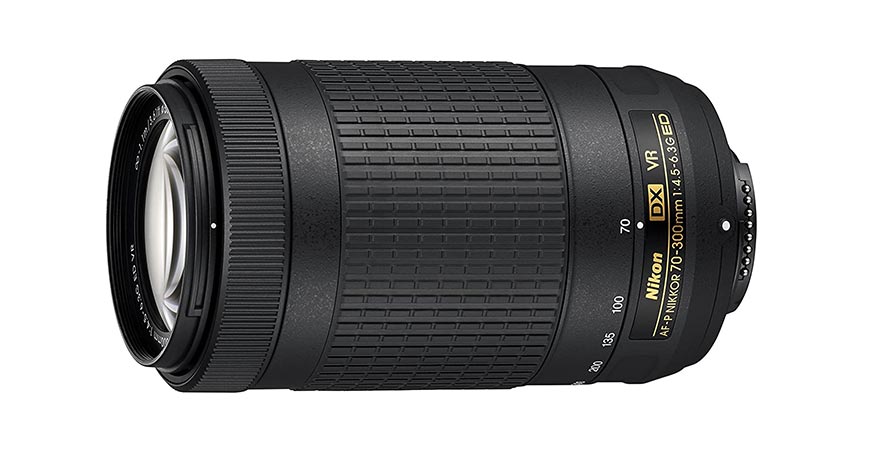
The first sports photography lens in our list is one of Nikon’s AF-S series lenses with a silent save motor inside for fast focusing. Be it extreme movement combination of colors- you can impeccably cover any action shots with this lens.
This lens is compatible with a full frame. If you are shooting outdoor sports, no matter how far the subject is, you can extend the zoom to bring the subject closure and take precise shots.
Don’t worry if you are to shoot handheld; the VR image stabilization technology ensures clear images even in lighting deficiency.
Key specifications
Lens type: Telephoto
Dimensions: 12.5 x 7.19 x 7.19 cm
Weight: 415 g
Maximum angle Of view: 22°50′ (DX-format)
| Pros | Cons |
| Lightweight & well built | Isn’t compatible with many modern DSLR cameras |
| Sharp images, no blur | |
| Takes shot in low light |
2. Nikon AF-S NIKKOR 70-200mm f/2.8E FL ED VR Lens
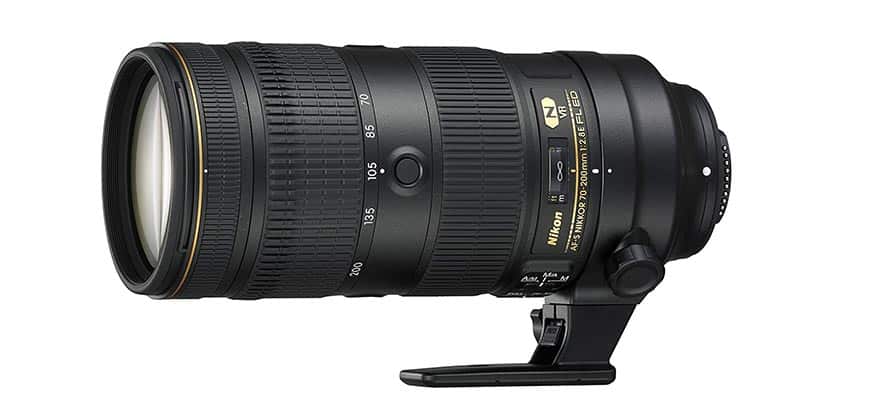
If you are looking for a versatile lens to shoot sports outdoors, here’s one for you.
Due to the fluorite (FL) lens element, this lens is lighter. The build quality is sturdy, and there’s dust and moisture protection, makings it a cool and best Nikon lens for outdoor sports photography.
Compared to the predecessor lenses, this lens is much improved regarding chromatic aberration or vignetting.
If you are worried about a backlit or low-lighting situation, you can take bright, clear images with a wide aperture.
Key specifications
Lens type: Telephoto zoom
Dimensions:7.9 x 3.4 x 3.4 inches
Weight: 3.15 pounds
Maximum angle Of view: 22°50′ (DX-format)
| Pros | Cons |
| Handling features | Distortion may occur |
| Fast and precise autofocus | |
| Perfect for the field photoshoot |
3. Nikon Z 100-400mm f/4.5-5.6 VR S
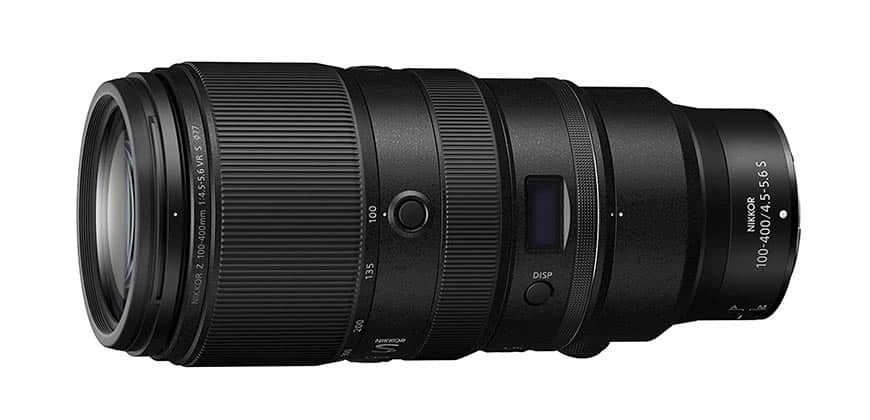
The third best camera lens of Nikon for sports photography in our list is the NIKKOR Z 100-400mm f/4.5-5.6 VR S, the first long telephoto zoom lens that was designed to work for z mirrorless system cameras. The marvelous range of focal length takes shots of distant field sports with precision.
In sports photoshoots, vibration isn’t a great deal. Even so, if you need one, this lens offers vibration reduction. If you use a camera that has in-body image stabilization with this lens, you are good to shoot handheld, even in light deficiency.
Inside the lens, there are high-speed AF motors that focus fast with the subjects in motion. Thanks to the lens optics it can capture fantastic and accurate shots regardless of focal length.
Key specifications
Lens type: Telephoto
Dimensions: 8.74 x 3.86 x 3.86 inches
Weight: 3.2 lb
Maximum angle Of view: 24°20′ (FX format)
| Pros | Cons |
| Dust & smudge resistant | Arca-swiss mount might cause trouble with the tripod |
| 1:2.6 macro focusing | |
| Performs well with teleconverters |
4. Nikon AF-S 80-400mm f/4.5-5.6G ED VR
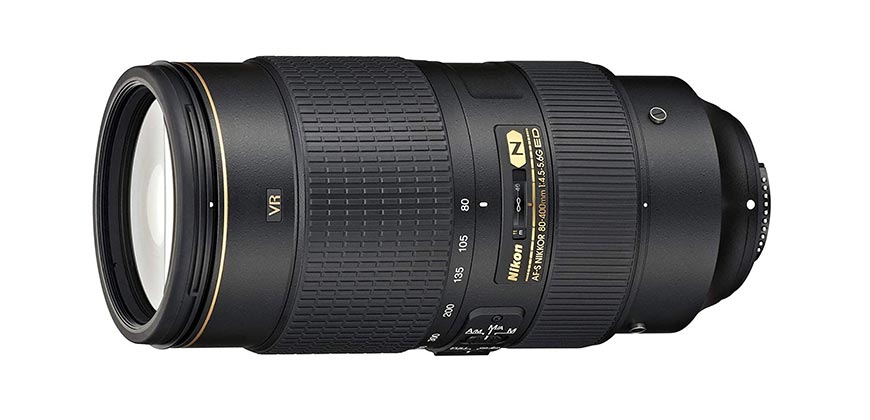
Looking to take versatile shots? Here is the Nikon AF-S 80-400mm f/4.5-5.6G ED VR, a multi-zoom lens and one of the best Nikon lenses for outdoor sports photography. It captures sharp images from wider to more detail.
With the aperture range, you can use a fast shutter speed, separate the background, and work in low light.
The lens has a silent wave motor autofocus system. As a result, it can capture shots nearly silently, which especially suits movie or still shooting.
Key specifications
Lens type: Telephoto
Dimensions: 7.99 x 3.78 x 3.78 inches
Weight: 3.46 pounds
Maximum angle Of view: 30° 10′ to 6° 10′
| Pros | Cons |
| Lightweight & high-quality build | Not a constant-aperture zoom |
| Vibration reduction image stabilization | |
| Compatible with both FX and DX image sensors |
5. Nikon AF-S 200-500mm f/5.6E ED VR
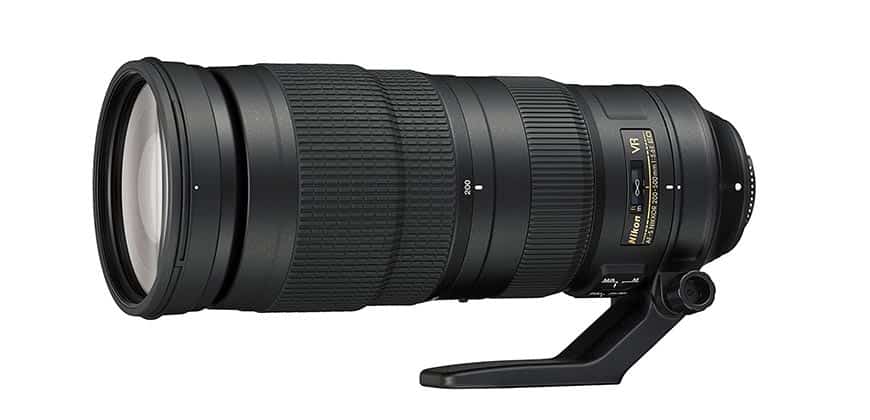
This is one of the best Nikon lenses for low-light sports photography. Athletes are moving fast constantly; this lens gives you the edge of taking sharp and steady photos, thanks to the electromagnetic diaphragm that syncs with the subject’s movement.
The inside Extra-low Dispersion (ED) glass helps correct the chromatic aberration. The inside AF-S NIKKOR lenses have incorporated Silent Wave Motor to ensure speedy autofocusing with accuracy.
Mounting this lens on an FX-format camera, users get a good focus on the athletes or performers in the field, distant or close, fast or slow. In DX format, the cameras bring an additional 1.5x zoom which is equivalent to 750mm!
Key specifications
Lens type: Telephoto
Dimensions: 7.48 x 7.48 x 17.2 inches
Weight: 5.07 pounds
Maximum angle Of view: 12°20′-5°00′ (FX format)
| Pros | Cons |
| Excellent zooming range | Swiveling the zoom ring takes time |
| Lightweight & compact design | |
| VR technology for steady photos |
6. Nikon AF S NIKKOR 85mm f/1.8G
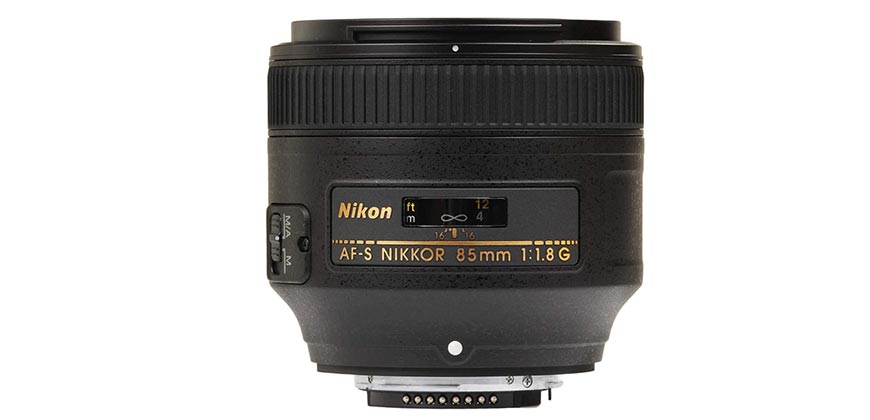
Nikon AF S NIKKOR 85mm f/1.8G is an excellent choice for sports photography at any time of the day. It allows you to take shots as precisely as possible without blur.
Also, you can shoot fast-moving subjects at a continuous speed that doesn’t break the image quality in the least.
There is an aberration and flare reduction inside the lens, which ensures users get sharp-quality images with little distortion.
Key specifications
Lens type: Prime Telephoto
Dimensions: 2.87 x 3.15 x 3.15 inches
Weight: 12.3 ounces
Maximum angle Of view: 28°30′
| Pros | Cons |
| Lightweight | Plastic build |
| Offers niche bokeh | |
| Works fine in low light |
7. Nikon AF-S 300mm f/2.8G ED VR II
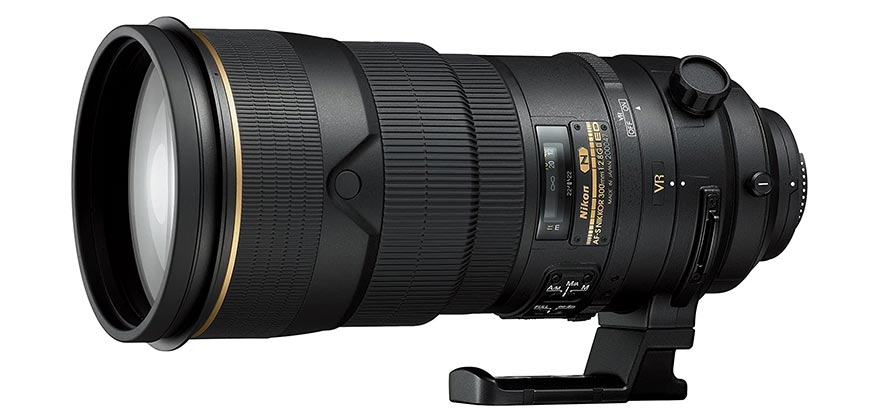
The next on our list is one of the best Nikon lenses for night sports or low-light photography. Nikon AF-S 300mm f/2.8G ED VR II is an ideal lens for shooting subjects from moderate to maximum distance.
Thanks to the SWM (Silent Wave Motor) technology, which offers fast, precise autofocusing without noise.
Nanocrystal coatings inside the lens reduce ghosting and flare to ensure you get quality without question. The ED elements ensure sharp quality and color correction while minimizing chromatic aberration.
Key specifications
Lens type: Prime Telephoto
Dimensions: 10.55 x 4.88 x 4.88 inches
Weight: 6.39 pounds
Maximum angle Of view: 8° 10′
| Pros | Cons |
| Sharp photos | Somewhat weighty |
| Accurate focusing | |
| Shots from any distance |
8. Nikon AF-S NIKKOR 24-70mm f/2.8E ED VR Lens
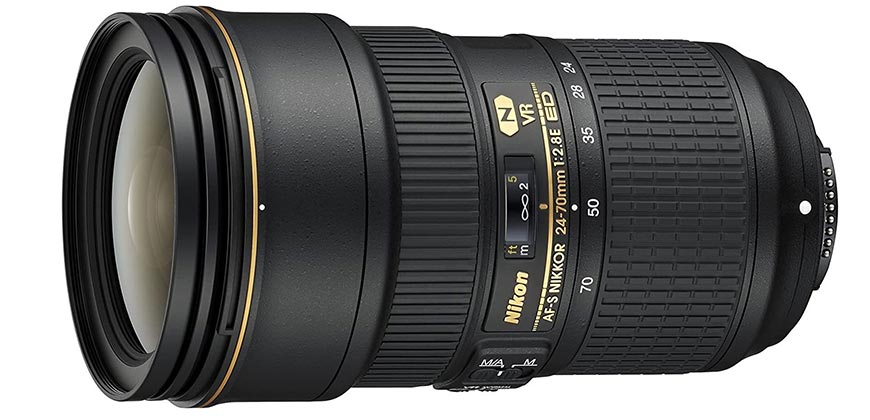
The Nikon AF-S NIKKOR 24-70mm f/2.8E ED VR Lens is one versatile lens for any sports photographer’s collection. Whether you consider it for speed, sharpness, or consistency, this lens beats its predecessors from any perspective.
The VR (Vibration Reduction) technology holds the sensor still so the shake or tremor doesn’t affect the photoshoot. You can take sharper photos even in lower-light situations.
Close-ups or wide angles, the 2.8 aperture allows you to freeze active moments with a faster shutter speed without affecting the quality.
Key specifications
Lens type: Standard Zoom
Dimensions: 5.75 x 5.75 x 9.25 inches
Weight: 2.35 pounds
Maximum angle Of view: 61° (DX-format)
| Pros | Cons |
| Produces high-quality images | A big lens |
| Balance between sharpness and soft blur | |
| Free of flare, ghosting, chromatic and spherical aberration |
9. Nikon AF-S DX NIKKOR 35mm f/1.8G Lens
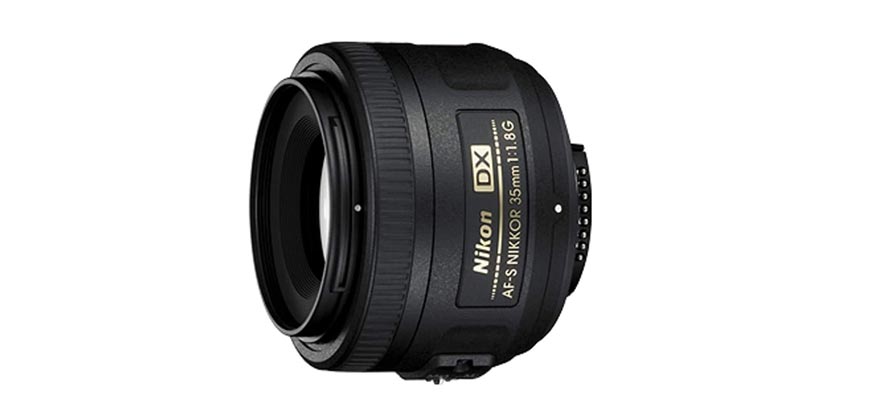
Are you looking for an affordable-priced Nikon lens for sports photography? Check the Nikon AF FX NIKKOR 200mm f/2G ED, specifically designed for APS-C format Nikon DSLR.
The lightweight and compact lens is compatible with both DX and FX formats in crop mode.
This lens has a ring-type ultrasonic autofocusing system, which is fast and accurate in performance. Also, it offers a tight depth of field from a slow zoom.
Key specifications
Lens type: Prime
Dimensions: 2.09 x 2.76 x 2.76 inches
Weight: 7.1 ounces
Maximum angle Of view: 44°
| Pros | Cons |
| Affordable priced | May show chromatic aberration |
| Well build and compact | |
| Captures sharp images |
10. Nikon AF FX NIKKOR 200mm f/2G ED
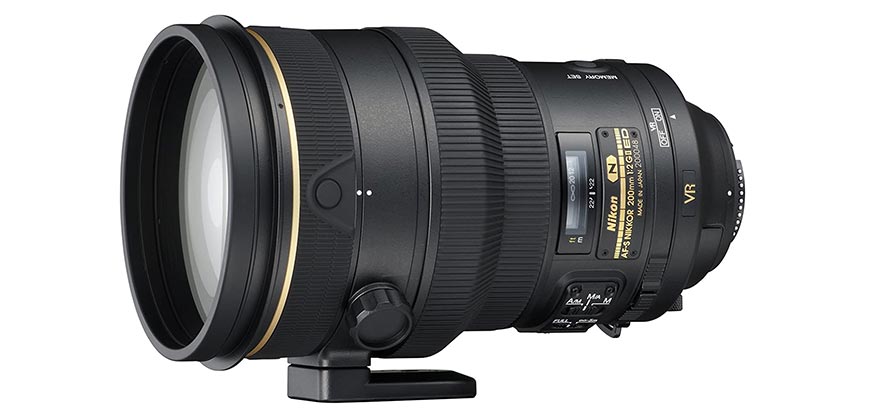
Nikon AF FX NIKKOR 200mm f/2G ED VR II Lens is one of Nikon’s professional range telephoto lenses with the best optical quality.
It is one of the best Nikon lenses for outdoor sports photography. The Nano Crystal coating reduces ghosting and flare; inside dust resistance protects the lens. Capture clear photos anywhere, anytime.
The lens efficiently controls motion blur to ensure marvelous photos. The Vibration Reduction (VR) technology ensures sharp dramatic images.
Key specifications
Lens type: Prime Telephoto
Dimensions: 8.03 x 4.88 x 4.88 inches
Weight: 6.46 pounds
Maximum angle Of view: 12° 20′
| Pros | Cons |
| Sharp photo quality | Somewhat heavy |
| Capture every detail | |
| Dust & moisture resistant |
You Can Also Read: What is the Best Nikon Lens For Real Estate Photography?
Factors to Consider While Choosing The Best Lens for Sports Photography
You might have to shoot outdoors/outdoors, during nighttime, or in harsh/low light. Your lens has to take the best shots, whatever the situation is. So, before choosing the best lens for sports photography, consider the following factors.
Long Lens
Or, you can say, a telephoto lens. Sports photography lenses tend to be long because photographers have to take shots from far away from the actual settings. In order to take shots of those scenes inside the venue, they use a long lens, which is proven to take great shots.
Zoom Lens or Prime Lens
Both zoom and prime lens have their specific purpose of serving in sports photography. A zoom lens is popular due to the flexibility it offers in capturing scenes and offers wide coverage. A prime lens has a fixed focal length, but it captures much more precise shots.
Motor Speed
Talking about speed. You need to choose a lens that has a fast focusing speed. That means your motor speed is a factor in this regard. In that case, consider using a USM lens. A USM lens focuses fast, which is convenient for taking shots of a subject in motion.
Shutter Speed
Sports have subjects who are speedy and in continuous movement. Therefore, you have a split-second chance to capture a moment you want to shoot. So, what are you going to do? You need a fast shutter speed. So, make sure your lens offers the highest level shutter speed.
Image Stabilization
Image stabilization in the camera is a solution against tremors or shake. But for sports photography, this isn’t as important. But having this feature in your camera might come in handy when you are taking shots of particular people, like fans cheering or players’ reactions, etc.
Dimension
Sports photography cameras are somewhat long and bulky. They mostly need a tripod to support them. In this case, you better focus on the features that will serve you to get the best shots.
Budget
A good budget will get you a good lens, definitely. However, if you are short on budget, you can choose to be flexible. Or you can purchase a pre-owned one. What matters is that you are comfortable with your lens.
Review
After researching, make sure to do research properly and check other users’ reviews of your preferred lenses. This may take some time, but it will keep you on the safe side that your money is being invested in a good lens.
FAQs
How do you take good-quality sports photos?
– Use a fast shutter speed. This will give less time to the sensor and freeze or slow down the moments or scenes you are capturing.
Using a fast shutter speed might invite darkness into the picture. As a counter solution, increase your ISO and choose a low f-stop for your aperture. You can turn on the in-camera stabilization or vibration reduction to avoid blur in your picture.
What makes a good sports photograph?
– Pictures that convey the peak moment, intriguing expression, or pure emotion of joy or sadness are considered good sports photographs.
What depth of field do you generally need in sports photography?
– A shallow depth of field isolates the subject from the environment, which is generally required in sports photography.
What settings should you need for night sports photography?
– For nighttime sports photography, have your AF mode on, ISO 1600, wide aperture (f 2.8), and shutter speed 1/1000 or more. Then adjust it as you need.
Is 400mm enough for sports?
– A 400mm lens is capable enough to take shots of a large venue.
Final Verdict
So, there you go, the 10 best Nikon lenses for sports photography considering budget, low light, indoor and outdoor.
Even so, the best lens for you would be the one you find comfortable to work with.
So, do your fair share of research before buying a lens.
Hope you can find the lens you need.
